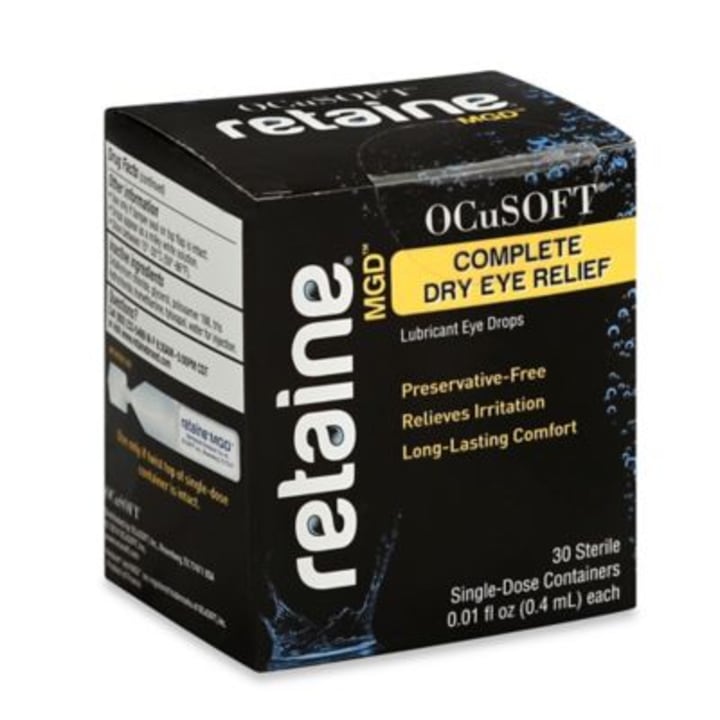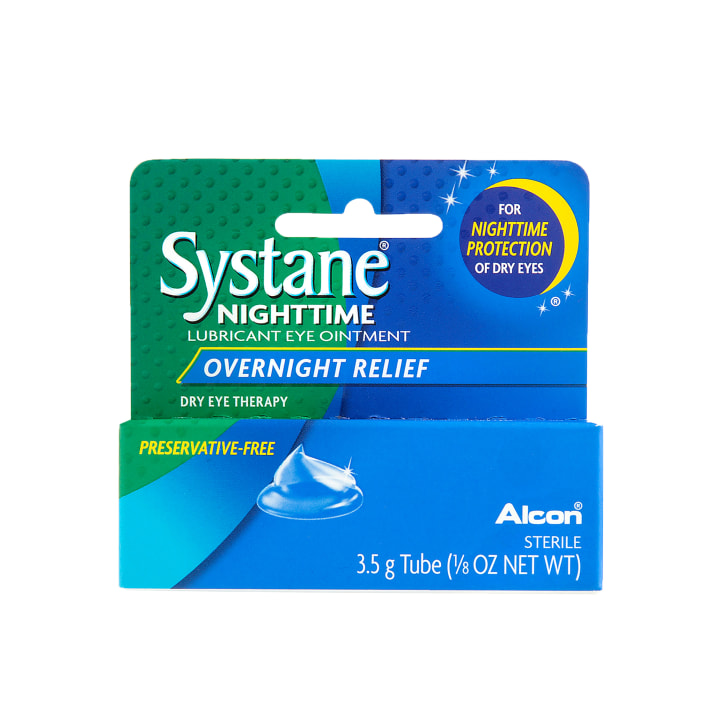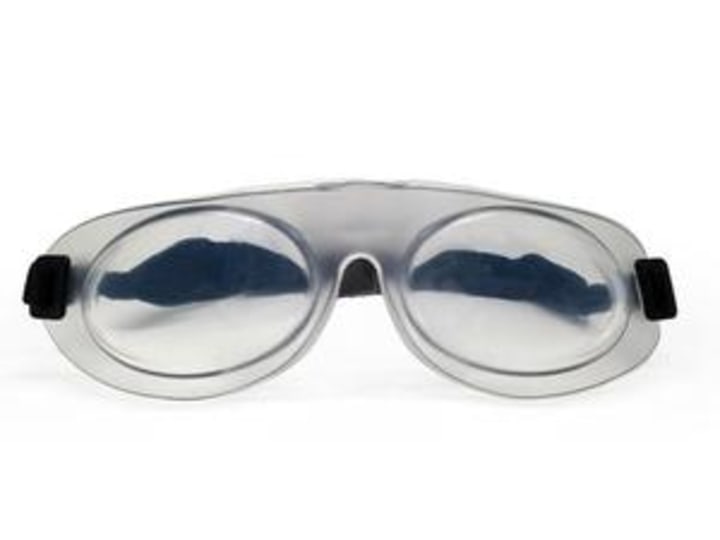If your eyes are so dry that your blinks make noise, you’re not alone. Nearly 5 million Americans experience dry eyes, according to the National Eye Institute (NEI), a federal agency that conducts research on visual disorders, and everything from not blinking enough to wearing contacts to being older than 50 can increase your chances of experiencing symptoms.
But just because your eyes are burning, stinging or inflamed (or all three) doesn’t mean your eyes are destined to stay Sahara-like. These days, there are plenty of ways to treat dry eyes (some help to relieve symptoms, while others help to improve tear production), the efficacy of which depends on the root cause of your dry eyes.
Skip ahead Best eye drops
What causes dry eyes?
“Dry eye disease occurs when your tears are unable to provide adequate lubrication, either because there’s insufficient tear production (known as an aqueous deficiency) or poor quality tears (meibomian gland dysfunction or MGD),” said Kambiz Silani, OD, chief clinical director at Beverly Hills Optometry Advanced Dry Eye Center in California.
Between the two, MGD is the more common cause of dry eyes. When tear production is optimal, the tears themselves will have an oil layer on their surface that prevents them from evaporating too quickly, and this oily layer is made by the eye’s meibomian glands. “Blockages in these oil-secreting glands result in a reduced secretion of the protective layer of tears and lead to fast evaporation,” Silani explained. Cue dry eyes.
Then there’s aqueous deficient dry eye, which is as it sounds — the inability to produce a proper aqueous (watery) layer of tear film. “It’s typically seen in people who are post-refractive surgery, such as LASIK and PRK,” said California-based eye specialist and optometrist Ashley Katsikos, OD. “It can also be seen in patients who have varying forms of autoimmune disease, including Sjogren’s syndrome, lupus, or inflammatory eye diseases, such as ocular rosacea.”
For the majority of dry eye sufferers, over-the-counter treatments will usually do the trick. These range from artificial tears that restore the oil layer to the tears to nighttime ointments that keep moisture in the eye while you’re sleeping.
“Once you’re getting to the point where you’re using artificial tears more than three times a day and you’re still in need of more relief, that’s when you may need to turn to more advanced treatments,” said New York-based optometrist Jonathan Wolfe, OD. Translation: Make an appointment with your eye doctor, who can perform tests to determine the root cause of your symptoms and put together an appropriate treatment plan.
The best OTC treatments for dry eyes
Artificial tears
“Artificial tears mimic your natural tears in order to provide lubrication for your eyes, and are composed of the same compounds found in your natural tears,” said Katsikos.
Since there’s an overwhelming variety of OTC artificial tears on the market, eye doctors recommended sticking to preservative-free lubricating drops, which are primarily sold in single-use vials instead of one multi-use bottle. “The preservatives in bottled tears will actually exacerbate your dry eye because it causes ocular surface disruption,” said Katsikos.
It’s also best to steer clear of redness-removing drops, as these are only vasoconstrictors that reduce the diameter of the blood vessels on the whites of the eyes—they do nothing to help relieve dry eyes.
“Another common misconception is that the store brand eye drops are just as good as the brand name,” said Katsikos. “This isn’t true—a lot of the store brand drops contain alcohol, which further aggravates dry eyes by, again, causing ocular surface disruption.”
Eyelid wipes and sprays
The goal of lid wipes and sprays is the same—to help clear away excess debris around the oil glands and help stabilize tears, said Wolfe. This keeps any bacteria, oil and residual eye makeup from clogging the openings of the oil glands and causing an inflammatory reaction.
Eye masks
Warm compresses can be messy and have a tendency to cool lightning-fast, which is where an eye mask can come in handy. Once heated in the microwave, it stays warm for the allotted time it’s to be worn for dry eye relief. (Usually, in 10- to 15-minute increments.)
Because reduced oil gland function is the main cause of dry eye, using a heated eye mask one to three times per day can keep the oil glands flowing within the eyelids, said Silani.
Ointments
For people whose dry eyes are caused by lagophthalmos, where their eyes are unable to completely shut when they blink or are asleep, an ointment prevents tears from evaporating off of the front surface of the eye at night. “The nighttime ointment is used to ‘seal off’ the area of the eye that’s exposed to the open air when they’re sleeping, and keeps the eye moist,” said Wolfe.
Wrap-around sunglasses
They’re not high on the list of treatment options, but wrap-around sunglasses work great for people who are light-sensitive or sensitive to wind and fans. “They can limit the amount of light and airflow that can irritate the eyeballs,” said Silani, ultimately worsening dry eye symptoms.
The best in-office treatments for dry eyes
Prescription eye drops
The most widely used prescription drops for chronic dry eyes are Restasis, Xiidra, and Cequa. “All three work by interrupting or reducing different steps in the inflammatory cycle on the front surface of the eye,” said Wolfe. “This stabilizes the tear film, allowing it to ‘stick’ onto the surface of the eye better, while also increasing the volume of tears produced.”
While these medications can be effective, they need to be taken regularly over a longer stretch of time (usually, months) before significant improvements are felt, he added.
Eyelid cleaning (NuLids)
“NuLids is an at-home eyelid cleaning device that removes excess oils, makeup and debris from the eyelids,” said Silani. The gentle massaging action may also stimulate the meibomian glands, improving the health of the eyelid margin and relieving dry eye symptoms. Best of all, you only have to use it for one minute a day.
Punctal plugs
“These silicon or collagen plugs act as a stopper in the drainage structure of the eye (the puncta),” said Wolfe. “They prevent the tears from draining away so quickly, and allow for them to stay in the eye longer.”
Neurostimulation (TrueTear)
For people with severe dry eye symptoms, TrueTear is an at-home device that sends tiny pulses of energy through the nasal cavity, said Silani, which stimulates the glands surrounding the eyes to produce tears.
Intense pulsed light therapy (Optima IPL)
Optima IPL works well for inflammatory dry eye and ocular rosacea patients. The treatment zaps unwanted collateral blood vessels that contribute to the redness of the eyelids and eyeball.
“It also stimulates the oil glands within the eyelids, targets demodex (eyelash mites) and reduces the inflammation of the eyelids and surface of the eye,” said Silani. “Usually, multiple sessions are recommended for best results.”
Thermal pulsation (LipiFlow)
LipiFlow is an automated treatment that safely and effectively melts the oils within the eyelids and cleans out the dead cells or unhealthy oils. “The heating component is gentle, lasts roughly 10 to 15 minutes depending on the device, and essentially takes the oils from a butter, toothpaste, solid state to a liquid, olive oil consistency, followed by a massaging effect to unclog the glands,” said Silani.
Personalized heat expression (TearCare)
This office-based procedure addresses MGD, the condition behind the majority of dry eye disease cases. “The TearCare system applies carefully calibrated heat directly to the eyelids in a personalized, open-eye procedure, in order to clear the meibomian gland blockages associated with MGD,” said Silani.
Protective lenses
Scleral lenses are custom fit lenses that are filled with saline and inserted into the eye for all-day comfort. “The advantage of scleral lenses is the patient feels like they have lubricating drops in the eye, while the saline is present,” said Silani.
Another option is bandage lenses, which have anti-inflammatory components and growth factors that help in healing the surface of the eye. “These are an especially useful mode of treatment if the patient’s cornea has become significantly damaged from dryness since there’s often a vicious cycle due to friction from the lid while blinking causing further damage to the cornea,” said Wolfe.
The best products for relieving dry eyes
1. Clear C Eyelid Cleansing Wipes
These eyelid wipes help to keep the lash area clean of debris that can worsen dry eye symptoms and contribute to inflammation. The rinse-free formula is hypoallergenic and suitable for all skin types.
2. Avenova Eyelid and Lash Cleanser
Similar to wipes, Avenova’s lid and lash cleanser keeps your eyes healthy by washing away any excess bacteria that can lead to redness, irritation and inflammation of the eyelids. “I personally think sprays are better because they last longer and aren’t just for one-time use,” said Katsikos.
3. Heyedrate Tea Tree Oil Soap
Silani recommended tea tree oil for people struggling with eyelash mites, which can be a significant contributor to dry eye symptoms. Tea tree oil helps to remove contaminants and prevents eyelash mites from reproducing. Heyedrate’s soap is organic, 100 percent vegan and contains organic green tea, olive oil, coconut oil, raw shea butter and tea tree essential oil to get the job done.
4. Refresh Relieva PF Eye Drops
“My current favorite artificial tear is Refresh Relieva PF,” said Wolfe. “It’s a preservative-free formulation, which minimizes irritation to the ocular surface while stabilizing the tear film.” Refresh claimed the Relieva PF Eye Drops is the only preservative-free drop to come in a multi-use bottle.
5. Refresh Optive Advanced Lubricant Eye Drops
This one’s a great choice for contact lens wearers, said Kosikos. Its triple-action formula works on all three layers of the tear film, lubricating and hydrating the area while protecting your natural tears from evaporating. It comes in a convenient multi-dose bottle and you don’t have to shake it before use.
6. Retaine MGD Lubricant Eye Drops
Another preservative-free recommendation, Retaine MGD moisturizes, lubricates and protects moderate to severe dry eyes using electrostatic attraction — a fancy way of saying the drops stabilize the tear film and protect against moisture loss.
7. OcuSci Dry Eye Hot/Cold Compress
Leave on this antimicrobial dry eye compress from OcuSci for ten minutes to help hold moisture. It comes with a machine-washable cover to help make cleaning easier. When you have trouble falling asleep quickly, pop the compress into the freezer and wear it to help calm under-eye puffiness.
8. Bruder Moist Heat Eye Compress
When chronic MGD causes the oil glands to clog, this can lead to a chalazion (a swollen, painless bump on the eyelid) or a stye (an oil gland infection that causes a painful eyelid lump). That’s when this single eye compress from Bruder comes in handy: Its patented medibeads absorb moisture from the air. Once microwaved, the absorbed water is released as a moist heat that relieves discomfort and speeds up the healing process.
9. Cyxus Blue Light Blocking Glasses
Computer glasses aren’t a direct dry eye reliever, but they do reduce eye fatigue and eye strain, preventing you from adding to the list of uncomfortable symptoms you’re already experiencing. Plus, “glasses, in general, can block the turbulence from wind and fans that can contribute to dryness issues,” said Silani.
10. Ziena Nereus Dry Eye Sunglasses
These sunglasses come with a patented silicone moisture chamber that reduces tear evaporation and locks in moisture, while also blocking out wind and airborne irritants that can flare up dry eye symptoms.
11. Everlasting Comfort Ultrasonic Humidifier
Living in a drier climate can lead to dry eyes by causing your tears to evaporate faster, and keeping humidity levels above 45 percent can help alleviate symptoms. Enter this super-quiet humidifier by Everlasting Comfort that will last for over two days straight before needing a refill.
12. Systane Nighttime Lubricant Eye Ointment
Applying this preservative-free ointment just before bed can keep eyes from being exposed to dry air overnight, said Wolfe. It forms a protective layer for all-night relief.
13. Eye Eco Eyeseals 4.0 Hydrating Sleep Mask
“I recommend this mask for nighttime use in patients whose eyes are dry because of incomplete lid closure at night,” said Wolfe. “These moisture shields help prevent the tears from evaporating from a partially open eye.”
More shopping guides and recommendations
Catch up on the latest from NBC News Shopping guides and recommendations and download the NBC News app for full coverage of the coronavirus outbreak
























